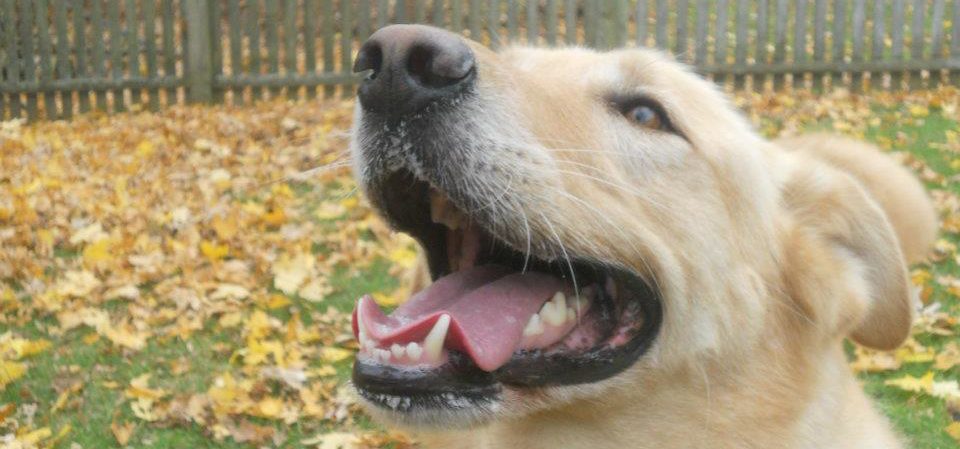
I stood, leash in hand, watching Brandy eat her kibble. She kept one eye on me and her body was ready to spring away the instant I moved toward her. But keeping me in her sights was an improvement. The first night I brought her home with me, she tried to hide in an upstairs bedroom at dinnertime. I’d closed all the doors, however, and she was stuck in the dead end hall. Quivering.
I told her, “You are eating with the pack, little girl.” I fed Teddy and Josie first, then put down her bowl. She watched them for a moment, then slowly began to eat. Josie, as usual, scarfed her food at a breakneck pace and watched Brandy carefully to make sure she didn’t leave anything. That didn’t bother Brandy. It was having me nearby made her worried.
Just as I’d hoped, she loved my two dogs. Teddy, who adored routine and was pretty unflappable, patiently showed her the ropes and lay next to her when she was scared. Josie tossed toys at her and then stole them back. Brandy’s whole body relaxed when she was with them.
I realized quickly that she lived in a state of nonstop vigilance and fear. Any new noise made her startle and freeze. When Teddy looked out the window and barked at the mailman, she raced to the other side of the room. When my son came over, she watched him from the other side of a doorway. But outdoors with only the dogs, she was happy to chase a squirrel or watch the birds. It was people who gave her pause.

I also got in touch with her former foster through the Lucky Lab Rescue facebook page for fosters. It had been two years but she remembered Brandy well. She posted that Brandy had a hard time trusting humans and would run if she saw a towel or even a toy swinging in the air. She wondered if she had been beaten or abused. She ended by saying, “I don’t know what makes some dogs bounce back after abuse while others don’t. Sadly, the physical wounds are always easier to heal than the wounds to one’s soul.”
I had raised a child with intense anxiety and this was familiar territory. I felt for Brandy. It was exhausting to anticipate the worst. I knew routine was my friend. I realized small steps were going to do the trick. Most of all, my secret weapon was the power of the pack.
“Come here, pretty girl,” I would call her while holding a leash. Brandy liked leashes – they meant happy things. I would tie her leash to one of my dogs, usually Teddy, so that she couldn’t hide and was never alone. They lay side by side where the sun hit the carpet or walked together to the water bowl. They got treats together and praise together. We were making progress.













